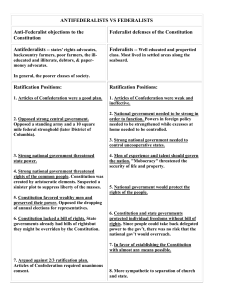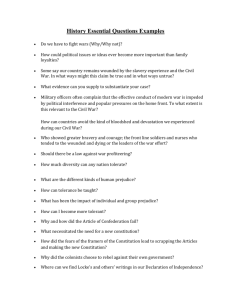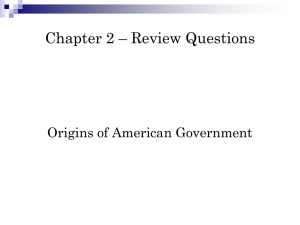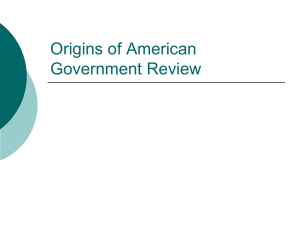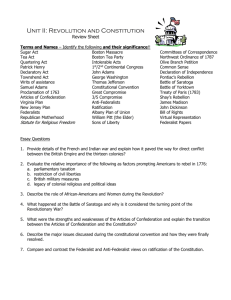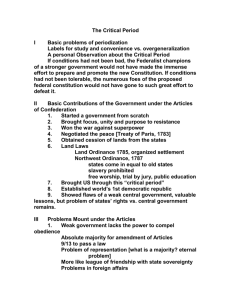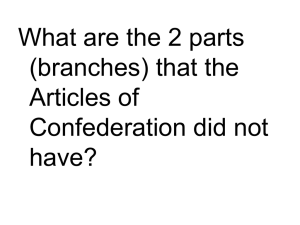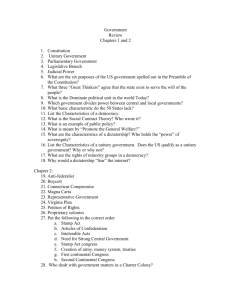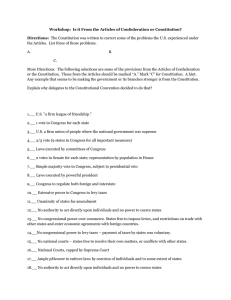Federalists vs Antifederalists
advertisement
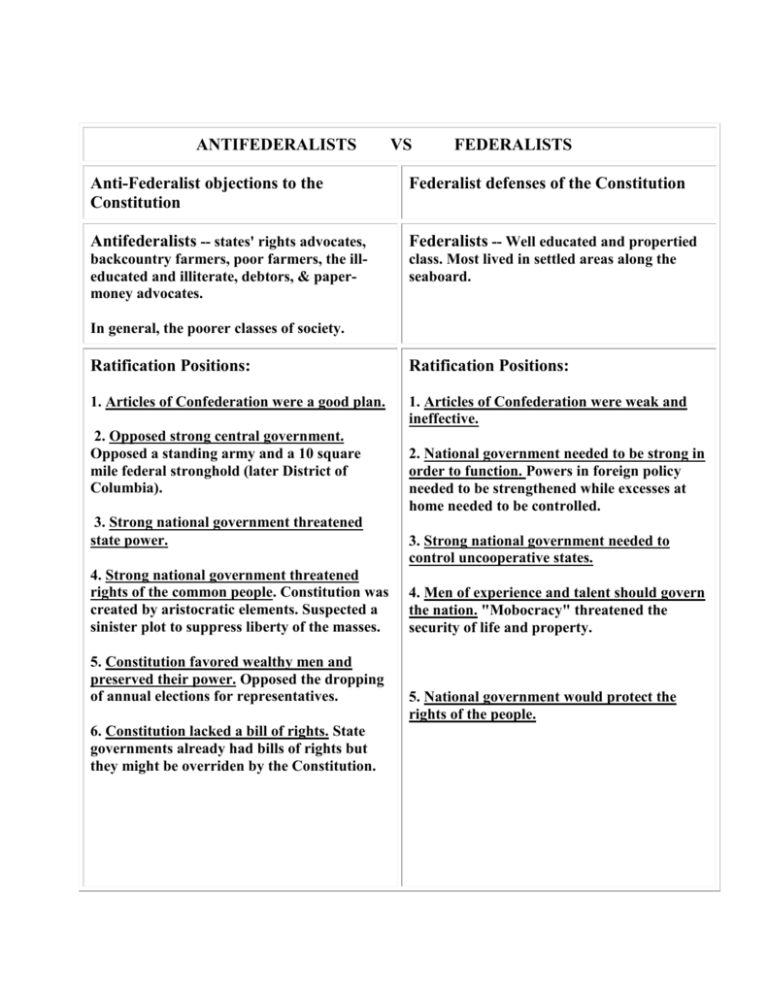
ANTIFEDERALISTS VS FEDERALISTS Anti-Federalist objections to the Constitution Federalist defenses of the Constitution Antifederalists -- states' rights advocates, Federalists -- Well educated and propertied backcountry farmers, poor farmers, the illeducated and illiterate, debtors, & papermoney advocates. class. Most lived in settled areas along the seaboard. In general, the poorer classes of society. Ratification Positions: Ratification Positions: 1. Articles of Confederation were a good plan. 1. Articles of Confederation were weak and ineffective. 2. Opposed strong central government. Opposed a standing army and a 10 square mile federal stronghold (later District of Columbia). 3. Strong national government threatened state power. 4. Strong national government threatened rights of the common people. Constitution was created by aristocratic elements. Suspected a sinister plot to suppress liberty of the masses. 5. Constitution favored wealthy men and preserved their power. Opposed the dropping of annual elections for representatives. 6. Constitution lacked a bill of rights. State governments already had bills of rights but they might be overriden by the Constitution. 2. National government needed to be strong in order to function. Powers in foreign policy needed to be strengthened while excesses at home needed to be controlled. 3. Strong national government needed to control uncooperative states. 4. Men of experience and talent should govern the nation. "Mobocracy" threatened the security of life and property. 5. National government would protect the rights of the people. 7. Argued against 2/3 ratification plan. Articles of Confederation required unanimous consent. 8. Opposed omitting any reference to God. 6. Constitution and state governments protected individual freedoms without bill of rights. Since people could take back delegated power to the gov’t, there was no risk that the national gov’t would overreach. 7. In favor of establishing the Constitution with almost any means possible. 8. More sympathetic to separation of church and state. STRENGTHENING OF THE FEDERAL GOVERNMENT Under Articles of Confederation A loose confederation of states –"a firm league of friendship." 1 vote in Congress for each state 2/3 vote (9 states in Congress for all important measures) Laws executed by committees of Congress Under Federal Constitution A firm union of people where the national government was supreme. 2 votes in Senate for each state; representation by population in House (Art.I, Secs. II., III) Simple majority vote in Congress, subject to presidential veto (Art. I, Sec. VII, para. 2) Laws executed by powerful president (Art. II, Secs. II, III) No congressional power over commerce. States free Congress to regulate both to impose levies, and restrictions on trade with other foreign and interstate commerce states and enter economic agreements with foreign (Art. I, Sec. VIII, para. 3) countries. Extensive power in Congress to No congressional power to levy taxes – payment of levy taxes (Art. I, Sec. VIII, taxes by states was voluntary. para. 1) No federal courts – states free to resolve their own Federal courts, capped by matters, or conflicts with other states. Supreme Court (Art. III) Amendment less difficult (Art. Unanimity of states for amendment V) – 2/3 Congress and ¾ of the states Ample power to enforce laws by No authority to act directly upon individuals and no coercion of individuals and to power to coerce states some extent of states
